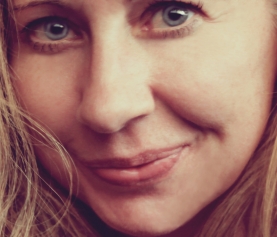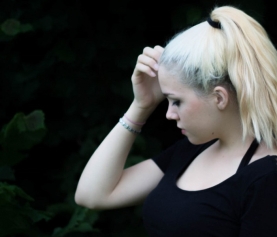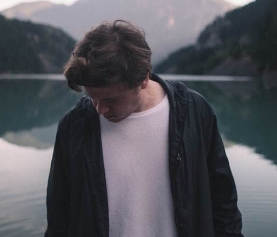Featured Creative: Time Lapse Photographer Stephen Patience
W: How did you get your start shooting time lapses? What did you find interesting about them?
SP: Looking around the internet and seeing the increasing number of stunning time lapse productions on Vimeo and YouTube really got me inspired. For me, time lapse is an extension of my existing camera skills to this growing photography genre. It’s great to capture and see how the world around us behaves which we cannot normally see with the naked eye.
Time lapse photography has been around for a long time, but this was usually static and didn’t typically draw people in. What I found interesting was the use of new tools providing a range of motion that gives the final production a real dynamic edge to the finished work.
W: What gear do you use?
SP: I use a range of equipment from various suppliers, each having their own unique point of difference. These tools include intervalometers (a small programmable controller), a dolly (long rail), and motorized heads for panning and tilting the camera.
I mainly use gear supplied by Dynamic Perception based in Michigan, USA. I believe they’re the most innovative in this field and their gear is evolving to meet the changing demands of time lapse photographers. I also use software programs like LRTimelapse specifically designed for editing and producing time lapse, and Adobe Lightroom, After Effects, and Premiere Pro.
W: Can you walk us through the process of shooting a time lapse from setup to final editing?
SP: Every time lapse photographer has a different workflow, but there are common threads to producing a great movie. There is a greater amount of time spent on the production using a fast computer than actually sitting behind the lens. My workflow centres on these basic steps:
- Think as a still photographer and choose a compelling scene that has great compositional aspects, ideally something that shows some form of change over time;
- Set up your gear and choose an appropriate interval between each shot. Always shoot in raw mode to allow better editing. Allow a moderate range of movement from start to end;
- Load and categorise the images onto your hard drive;
- Import the images using a photo editing program. Adjust the image for exposure, colour, highlights and tones. Apply these edits across all frames. Export them as finished images;
- Render a high resolution clip of the finished images in a program like Adobe After Effects. Make any time-based changes using key frames, i.e. points along the way where things might change such as exposure and changing light.
The workflow could end here for a single sequence and then be uploaded onto movie sharing websites or social media. For a production, further steps in the workflow might include:
- Importing the individual clips into a finishing program like Adobe Premiere Pro and sequence them on a theme to your own desire.
- Find an appropriate piece of music that fits the scenes. Edit the clips to keep the best bits of each time lapse, and speed up or slow down the individual clips to match the music.
- Test the movie by showing to others. Make any adjustments.
- Upload to movie channel sites and share on social media
W: How do you choose locations to shoot?
SP: Photographers are always looking at the work of others, whether that be from photo websites or from a book. I do the same. I do lots of research on locations, but don’t usually shoot the same as everyone else. Some locations are overdone. I like to find my scenes by exploring with my own two feet and stopping when something catches my eye. Then I evaluate compositional aspects.
W: Do you have a favorite type of landscape you like to shoot?
SP: I like to look for interesting land formations. This might include rock shapes, the way a stream flows through the land, or an interesting sky. Colour is another compositional aspect I like to bring into my landscapes.
W: What challenges do you face when shooting time lapses? Is lighting a challenge?
SP: There are many challenges, from lighting to technical issues such as familiarity with the gear, batteries, weather, such as rain drops or condensation building up on a lens, and in some cases, sand flies. One common issue for time lapse photographers including myself is flicker. This is where the aperture inside the lens doesn’t always rest in the same position after each exposure. This causes uneven changes in light. This is easily overcome however using camera techniques or software. Lighting can be a challenge too. Sometimes the sky and light just don’t deliver.
In my recent Mainland New Zealand time lapse, I had issues with some scenes that were ‘blown out’, i.e., the bright highlights had left out some of the detail.
W: What do you take into consideration when choosing music for your time lapses?
SP: A good question and one I often struggle with. It’s been said by many that imagery and sound must compliment each other to keep us glued to the screen. A final production can look great visually, but the effect is easily lost when the music doesn’t match. I’ve seen this a number of times. When making my productions, I listen to hundreds of tracks and visualise the scenes in my mind. You know it when you hear it. I like to consider the change in tempo and beat of the track and this is great to link something from the clip, such as the peaking of the sun over the mountain on a sunrise, or a scene transition. Generally speaking, landscapes and city scenes often demand different music genre.
W: What do you have to do differently when creating a Hyperlapse?
SP: This is a technique that requires a lot of patience, and effort can be wasted if the technique is not properly followed. Hyperlapse requires careful measuring out of the ground, a camera that’s level on the horizontal, a frame every ten seconds, and an eye focused on a central point of each shot. After that, lots of post production on the PC is required using a good program that has a good stablilisation feature.
W: Whose time lapse work inspires you most?
SP: I’m inspired by time lapse photographers including Bevan Percival who lives here in New Zealand, Enrique Pacheco and Eric Hines. Their work and knowledge of time lapse comes from hours of dedication. I have a lot more to learn to get to this level.
See more of Stephen’s work at the following websites:
Facebook: https://www.facebook.com/StephenPatiencePhotography
Website: http://patience.co.nz
If you’re interested in being featured on our blog, send your portfolio to social@wispeo.com!
Wispeo is now mobile! Get the easiest way to share videos and photos from your phone in the App Store or from Google Play.





![Bridesmaid Taking Picture of Newlyweds and Family (Newscom TagID: ipurestockxtwo977942.jpg) [Photo via Newscom]](http://blog.wispeo.com/wp-content/uploads/2015/08/ipurestockxtwo977942-150x150.jpg)
